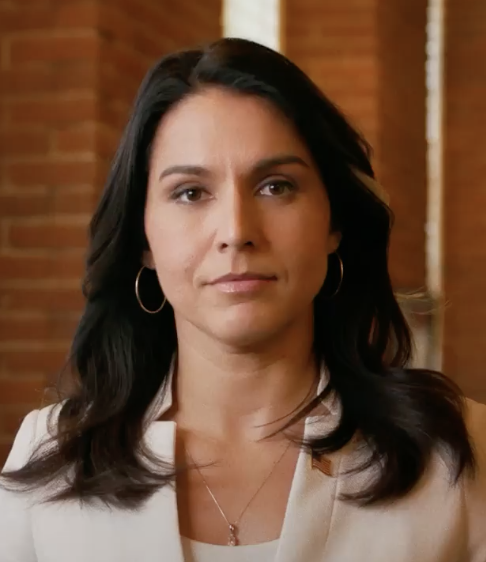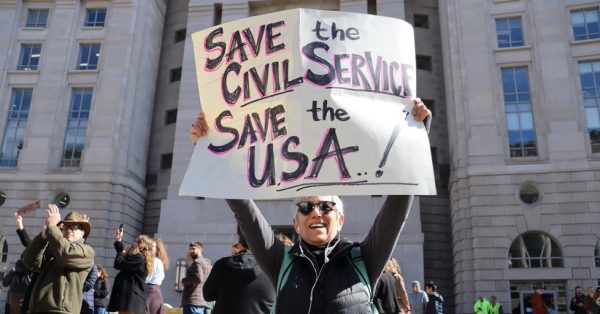Debates, Dropouts, and Diversity
Some More About the 2020 Elections

Photo courtesy of Representative Tulsi Gabbard’s Instagram (@tulsigabbard)
Despite polling at sub-one percent, Representative Tulsi Gabbard is the sole person of color left in the election. Is that a problem?
If you’ve stumbled upon this article without reading my last article about the Democratic Candidates, you can find it here.
It started in December. California Senator Kamala Harris dropped out of the 2020 Democratic Primary. Next was Housing and Urban Development Secretary Julián Castro. In January, it was New Jersey Senator Cory Booker. After the New Hampshire Primaries, even more candidates dropped out of the race, with tech entrepreneur Andrew Yang and Former Governor Deval Patrick ending their campaigns. These no-longer candidates represented a wide swath of the liberal spectrum. From Yang’s seemingly radical proposal of a universal basic income of $1,000 a month to Patrick’s more moderate values— such as his opposition to Medicare for all and wealth taxes—these candidates were incredibly different. Yet they all shared one trait: they are people of color.
The Democratic party has long branded itself as the party of diversity and inclusion. It won the elections in 2008 and 2012 because President Barack Obama was able to galvanize minority voters. At the start of the primary season, it looked like this status would be reaffirmed. The field contained two black senators (Booker and Harris), the first Asian-American to make a serious bid for the presidency (Yang), a Latino former cabinet secretary (Castro) and the first American-Samoan elected to Congress (Representative Tulsi Gabbard). Now, if we’re not doing the Elizabeth Warren math, Representative Gabbard is the last candidate of color left.
Similar to the hashtag #oscarssowhite, #demdebatesowhite has become a trending tag on Twitter. In January, the Democratic party had the dubious honor of hosting the first all-white debate in the 2020 race. The February debate was slightly more diverse due to Yang qualifying for the debate. However, he has since dropped out and with Representative Gabbard polling at sub-one percent—not likely to make the debate stage anytime soon—it looks like all of the debates from here on out are going to be all-white.
Why are all of these candidates dropping out? Was racism a factor? Candidates like Senator Harris have cited financial difficulties as their primary reason for dropping out. However, Senator Harris was a mid-tier candidate before deciding to leave the race, trailing Senators Elizabeth Warren and Bernie Sanders and Former Vice President Joe Biden alongside Former Mayor Pete Buttigieg and Senator Amy Klobuchar. Former Mayor Buttigieg has had a meteoric rise since then, but with so many performing at the same level as her, why was Harris the one that dropped out?
Although not stated directly, some candidates such as Andrew Yang have looked at the way that racism has affected his campaign. On the show The Patriot Act with Hasan Minhaj, Yang looked at media coverage of his campaign and found some issues. One particularly egregious example he cited was when CNBC messed up graphics for him and Representative Gabbard when they placed a picture of Senator Kristen Gillibrand over Representative Gabbard’s name and used a picture of businessman Geoff Yang for Andrew Yang. Another example of this was when MSNBC mistakenly called Andrew Yang “John Yang.” A final example is Yang constantly being left off of graphics for polling and fundraising, even when he raised more or polled higher than other candidates. CNN left him off of a graphic depicting candidates’ fundraising hauls for the third quarter. Senator Booker was on the graphic despite the fact that he only raised 6 million dollars in comparison to Yang’s 10 million. All of these issues have funneled into the hashtag #yangmediablackout. The Yang Gang—supporters of Yang—have used this hashtag to call attention to this lack of proper media coverage of his campaign and have cited this as a reason for Yang’s campaign polling in the single digits.
People on all sides of the aisle believe that we should choose the best person for the job regardless of gender, race, sexuality or any other identity factors. But, if media coverage is patchy at best for candidates of color, can we truly identify the best candidate? If a candidate is being left off of graphics that might cause people to take notice of them, can their campaign take off? However, regardless of whether or not you believe diversity is essential, or if you believe that racism is affecting candidates of color, diversity is a strategic advantage in an age where minority turnout is becoming crucial.
In 2008, President Obama won the presidential election. According to a study done by Cornell University, 95 percent of African-American voters voted for him. At that time, 13 percent of the population was African-American. This time around, Former Vice President Joe Biden, who was President Obama’s running mate, is trying to capitalize on this segment of the population, but he hasn’t been nearly as successful. He is only polling at about 27 percent support from African-Americans. Policy-wise, Biden is very similar to Obama: he aims to unite the party, he carries the torch for the Affordable Care Act (Obamacare) and he is fairly moderate. So, why the lack of enthusiasm? Part of the problem could be that he has made some gaffes that a candidate of color would not have been as likely to have made. In a recent interview with the New York Times, when asked about the legacy of racism, he blamed the academic achievement gap between black and white students on their parent’s failures to engage in their children’s education and to help their children succeed, they should “play records at night to ‘make sure that kids hear words’” according to the Huffington Post. Not only is this comment deeply problematic because as linguist William Labov put it, children in low-income and minority families are “bathed in verbal stimulation from morning to night,” it was also incredibly insensitive and alienating to minority voters.
According to the most recent census, non-whites make up 39.6 percent of the electorate. In general, non-whites are less politically engaged, with voter turnout rates of 49 percent for African-Americans, 35 percent for Asians and 33 percent for Hispanics according to the Washington Post. In contrast, 54% of voting-age whites report voting. A candidate that appeals to minority groups could convince this crucial segment of the population to come out and vote. If the Democratic Party wants to beat President Trump, they should consider a more diverse candidate, or at the very least, a candidate that appeals more to minority voters.

Kasie Leung is a freshman staff writer for The Tower. When not writing manifesto-length articles, you can find her in Gilman-32 spending ungodly amounts...






